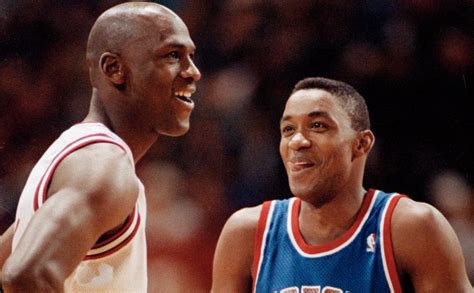
Jordan Spieth’s adventurous approach shot on the 18th hole during the first round of the U.S. Open at Pinehurst No. 2 has ignited a social media frenzy, drawing both criticism and amazement for its audacity and unconventional outcome.
PINEHURST, N.C. – Jordan Spieth, a name synonymous with both brilliance and unpredictability on the golf course, found himself at the center of attention once again during the opening round of the U.S. Open at Pinehurst No. 2. This time, it wasn’t a miraculous birdie or a clutch putt that grabbed the headlines, but rather a daring, some might say reckless, approach shot on the 18th hole that sent social media into a frenzy. Spieth, facing a challenging lie near a wire fence far to the right of the fairway after an errant drive, opted for a bold play instead of a safer option. The resulting shot, and the subsequent debate it sparked, has become one of the defining moments of the early stages of the tournament.
The incident unfolded on the par-4 18th, a treacherous finishing hole at Pinehurst No. 2 known for its undulating greens and challenging approaches. Spieth’s tee shot veered sharply to the right, landing him in a sandy area bordering the course. The immediate challenge was clear: a wire fence stood between his ball and the green, seemingly obstructing any direct path to the hole. Many expected Spieth, a seasoned professional known for his strategic thinking, to take an unplayable lie, incurring a penalty stroke, and then play his next shot from a more favorable position. However, Spieth had other ideas.
“It wasn’t really a question of whether I could get it over the fence,” Spieth explained later, “it was more like if I move it, am I on a sprinkler head and then I get a free drop, and is that drop better than trying to hit this shot where I am at.”
Instead of opting for the conservative route, Spieth, after consulting with rules officials to ensure the legality of his play, chose to attempt a seemingly impossible shot. He aimed well left of the green, intending to hook the ball dramatically around the fence and back towards the target. The risk was immense: a miscalculation could send the ball further out of bounds or into even more difficult terrain.
The execution, however, was nothing short of spectacular. Spieth, with his characteristic flair, swung with controlled power, sending the ball on a high, arcing trajectory. The ball curved sharply in the air, narrowly avoiding the fence and landing on the green, albeit a significant distance from the hole. The crowd erupted in a mixture of disbelief and admiration.
“I was just trying to… I don’t know what I was trying to do,” Spieth admitted with a wry smile after his round. “It was a tough spot, and I was trying to make something happen.”
While the shot itself was undeniably impressive, it also triggered a wave of debate online. Some praised Spieth’s audacity and creativity, lauding his willingness to take risks in pursuit of a better score. Others, however, criticized his decision-making, arguing that the shot was unnecessarily risky and that a more conservative approach would have been wiser.
Golf analysts and commentators weighed in on the discussion, offering varying perspectives. Some pointed out that Spieth’s aggressive style has always been a hallmark of his game, contributing to both his greatest triumphs and his occasional setbacks. Others suggested that the pressure of the U.S. Open, combined with the difficult nature of Pinehurst No. 2, may have influenced Spieth’s decision.
“Jordan is a player who thrives on creativity and imagination,” said golf analyst Brandel Chamblee on Golf Channel. “He’s not afraid to try shots that others wouldn’t even consider. Sometimes it works, sometimes it doesn’t, but you can never accuse him of being boring.”
The debate surrounding Spieth’s shot highlights a fundamental tension in golf: the balance between risk and reward. While conservative play can often lead to consistent results, it can also limit a player’s potential for greatness. Conversely, aggressive play can yield spectacular victories, but it also carries the risk of costly mistakes.
Ultimately, Spieth’s shot on the 18th at Pinehurst No. 2 will be remembered as a defining moment of the 2024 U.S. Open, regardless of how Spieth fares in the remainder of the tournament. It was a shot that encapsulated his unique style, his unwavering confidence, and his willingness to push the boundaries of the game. It was also a shot that sparked a lively debate, reminding us that even in a sport as structured as golf, there is always room for improvisation and creativity.
Following the miraculous shot, Spieth two-putted for par, ending the day at 1-over-par 71 and well within striking distance of the early leaders. This par save helped to mitigate the damage caused by some earlier struggles in the round, proving the importance of Spieth’s never-give-up attitude. The ability to recover from difficult situations can be key to staying competitive in major championships.
“I think it was just a testament to kind of never giving up and trying to make something out of a tough situation,” Spieth said.
The course conditions at Pinehurst No. 2, with its firm and fast greens and challenging hazards, demanded precision and strategic thinking. Spieth’s performance reflected the challenges that all competitors faced as they navigated the demanding layout. The course setup tested players’ ability to manage risk and reward, forcing them to make difficult decisions on every hole. Spieth, despite his adventurous shot, acknowledged the need to maintain focus and adapt to the ever-changing conditions.
The shot also sparked discussions about course design and the role of hazards in modern golf. Pinehurst No. 2, renowned for its natural and unforgiving terrain, presents unique challenges that differ significantly from more manicured and predictable courses. The wire fence near the 18th green is not a traditional hazard, but it adds to the course’s distinctive character and forces players to think outside the box.
The reaction to Spieth’s shot went beyond the immediate golf community, generating interest from a broader audience. Sports fans and casual observers were drawn to the drama and spectacle of the moment, sharing their reactions and opinions on social media platforms. This wider engagement highlights the ability of golf, especially during major championships, to capture the attention of people who might not typically follow the sport.
The shot underscored Spieth’s ability to remain a captivating figure in the world of golf. Since bursting onto the scene as a young phenom, Spieth has experienced both incredible highs and challenging periods. His willingness to take risks and his emotional connection with the game have endeared him to fans, who appreciate his authentic and unpredictable style. Even when his play is not perfect, Spieth continues to generate excitement and intrigue.
Looking ahead to the remaining rounds of the U.S. Open, Spieth’s performance will be closely watched. His ability to harness his creativity and manage the risks associated with his aggressive style will be critical to his chances of contending for the championship. Regardless of the outcome, Spieth’s shot on the 18th hole will be remembered as a testament to his unique talent and his unwavering commitment to pushing the limits of the game.
The debate also touched on the broader topic of strategic decision-making in professional golf. Modern players have access to vast amounts of data and technology, which they use to analyze course conditions, evaluate risks, and optimize their strategies. However, Spieth’s shot served as a reminder that intuition and instinct can still play a significant role, particularly in pressure situations. His decision to go for the risky shot was based not only on a calculated assessment of the odds but also on his own confidence in his abilities.
The widespread attention given to Spieth’s shot also underscored the power of social media in shaping public perception of sporting events. Instant replays, viral videos, and real-time commentary amplified the impact of the moment, turning it into a global talking point. The speed and reach of social media have transformed the way that sports are consumed and discussed, creating new opportunities for engagement and debate.
Furthermore, the discussion highlighted the subjective nature of golf commentary and analysis. While some experts praised Spieth’s creativity and audacity, others questioned his judgment and suggested that he should have played a more conservative shot. These differing perspectives reflect the complexities of the game and the challenge of evaluating performance in a sport where luck and individual skill both play significant roles.
Spieth’s enduring popularity stems from his relatable and human approach to the game. He is not afraid to show his emotions on the course, whether it be joy, frustration, or disappointment. This authenticity resonates with fans, who appreciate his vulnerability and his willingness to be himself. Even when he makes mistakes, Spieth remains a compelling figure, inspiring viewers to connect with the challenges and triumphs of professional golf.
The U.S. Open at Pinehurst No. 2, known for its demanding course setup, has historically produced moments of both brilliance and drama. Spieth’s shot on the 18th hole added to this legacy, becoming an instant classic that will be replayed and discussed for years to come. The shot exemplified the unique challenges of the course, which demands both precision and creativity from its competitors.
In the context of Spieth’s career, the shot can be seen as a microcosm of his overall approach to the game. He has always been a player who is willing to take risks and push the boundaries, sometimes to his detriment, but often to spectacular effect. This willingness to be bold has contributed to his success, making him one of the most exciting and unpredictable players in the world.
The shot also served as a reminder of the importance of course management in golf. Pinehurst No. 2, with its challenging hazards and undulating greens, demands that players think strategically about every shot. Spieth’s decision to go for the risky shot on the 18th hole highlighted the delicate balance between aggression and caution, and the need to adapt one’s strategy to the specific demands of the course.
Ultimately, Spieth’s U.S. Open performance is a reminder of the enduring appeal of golf as a sport that combines physical skill, mental toughness, and strategic thinking. The game’s inherent unpredictability ensures that there will always be moments of drama and excitement, capturing the attention of fans and sparking lively debates. The reactions underscored how a single, daring golf shot can resonate with audiences worldwide, highlighting golf’s ability to provide excitement.
The aftermath of Spieth’s shot also sparked a renewed appreciation for the role of caddies in professional golf. Michael Greller, Spieth’s longtime caddie, likely played a crucial role in advising him on the shot and helping him assess the risks and potential rewards. The relationship between a player and their caddie is a critical element of success in golf, and Spieth’s performance underscored the importance of trust and communication in this partnership.
In the broader context of the U.S. Open, Spieth’s shot served as a reminder of the unique challenges and traditions of this major championship. The U.S. Open is known for its demanding course setups and its emphasis on precision and strategic thinking. Spieth’s adventurous approach on the 18th hole exemplified the kind of bold play that is often required to succeed in this prestigious tournament.
The shot also generated discussions about the evolution of golf course design and the changing demands of the modern game. While traditional courses like Pinehurst No. 2 emphasize natural hazards and strategic challenges, newer courses often feature more manicured conditions and target-style layouts. Spieth’s performance highlighted the importance of adaptability and versatility in the modern game, as players must be able to excel on a wide variety of courses.
The widespread attention given to Spieth’s shot underscores the growing popularity of golf among younger audiences. Social media platforms have played a key role in attracting new fans to the sport, and moments like Spieth’s daring approach on the 18th hole are particularly appealing to younger viewers who are drawn to drama and excitement. The viral nature of the shot demonstrates the potential of golf to reach a wider audience through digital media.
Spieth’s shot will undoubtedly be included in future highlight reels and documentaries about the U.S. Open and his career. It encapsulates the essence of his playing style, his unwavering confidence, and his ability to create unforgettable moments on the golf course. The shot will serve as a lasting reminder of the excitement and unpredictability that make golf such a compelling sport.
The analysis of Spieth’s shot also highlighted the role of equipment and technology in modern golf. Spieth’s ability to execute such a challenging shot was partly due to the advanced technology of his clubs and the precision of his golf ball. Modern equipment allows players to shape their shots with greater accuracy and control, enabling them to attempt shots that would have been impossible in the past.
The impact of Spieth’s shot extended beyond the immediate golf world, generating interest from a broader audience interested in sports and entertainment. The dramatic nature of the moment and the widespread media coverage helped to raise the profile of the U.S. Open and attract new viewers to the sport. This underscores the potential of golf to captivate audiences beyond its traditional fan base.
Spieth’s performance at the U.S. Open is a testament to the enduring appeal of individual sports, where athletes are forced to rely on their own skills and mental toughness to overcome challenges. Golf, in particular, demands a unique combination of physical ability, strategic thinking, and emotional control. Spieth’s shot on the 18th hole exemplified the demands of the sport, capturing the imagination of fans and sparking a global conversation.
The intense scrutiny that Spieth faced after his shot highlighted the pressures that professional athletes face in the modern era. Every action is dissected and analyzed by fans and commentators, and players must be able to handle this intense pressure while maintaining their focus and composure. Spieth’s ability to remain resilient and bounce back from setbacks is a testament to his mental toughness.
Frequently Asked Questions (FAQ):
-
What exactly did Jordan Spieth do that caused such a stir at the U.S. Open?
Jordan Spieth hit an extremely risky and unconventional approach shot on the 18th hole during the first round of the U.S. Open at Pinehurst No. 2. After his tee shot went far right, landing near a wire fence, he chose to attempt a highly skilled hook shot around the fence and onto the green, instead of taking a penalty for an unplayable lie. The shot was executed successfully, albeit leaving him a long putt, and it became a viral sensation due to its audacity and difficulty.
-
Why was Spieth’s shot so controversial?
The controversy stemmed from the riskiness of the shot. Many felt that taking an unplayable lie and incurring a penalty stroke would have been the strategically smarter move, ensuring a safer approach to the green. Others argued that Spieth’s aggressive style and willingness to take risks are what make him exciting to watch and that the shot was a brilliant display of skill and creativity. The debate highlights the differing perspectives on risk versus reward in professional golf.
-
Did Spieth’s risky shot ultimately help or hurt his score on that hole?
Spieth managed to two-putt after landing the ball on the green from the incredible approach, ultimately saving par on the hole. The par save limited the damage and kept him within striking distance of the leaders. While the shot itself was risky, the successful outcome allowed him to maintain a competitive position in the tournament.
-
How did other golf analysts and commentators react to Spieth’s decision?
Reactions were mixed. Some analysts praised Spieth’s creativity and boldness, emphasizing that his aggressive style is a hallmark of his game. Others questioned the wisdom of the decision, suggesting that a more conservative approach would have been preferable. Commentators like Brandel Chamblee noted Spieth’s tendency to try shots that others wouldn’t even consider, acknowledging that while it doesn’t always work, it makes him an exciting player to watch.
-
What does this shot say about Jordan Spieth’s overall approach to golf and his career?
The shot is reflective of Spieth’s overall approach to the game, which is characterized by creativity, confidence, and a willingness to take risks. Throughout his career, he has demonstrated a penchant for making daring plays and pushing the boundaries of what is considered conventional golf strategy. While this approach can sometimes lead to mistakes, it has also contributed to his greatest triumphs and solidified his reputation as one of the most captivating players in the world. It shows that he’s never willing to give up and will try to make the best out of any situation.









